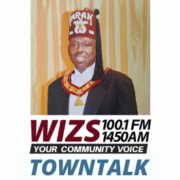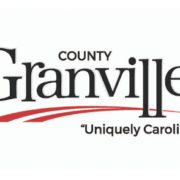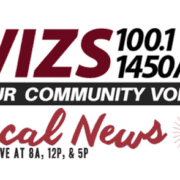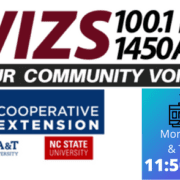A new book is out that captures, in words and photographs, some of the most admired and loved products ever to be made in Henderson – the Corbitt truck.
Tar Heel Treasures: Richard J. Corbitt and the Corbitt Motor Co. is available for purchase now, and Corbitt truck enthusiast Kenneth Stegall said the book is the result of several years’ work by its author, Richard Gabrick.
Stegall is archivist, treasurer and webmaster for the Corbitt Preservation Association. He was a guest on Monday’s TownTalk and had nothing but praise for the book, which contains several hundred photographs of the buggies, automobiles and trucks that rolled off the production lines at the factory just off Dabney Drive. He called it “the most complete edition that you’ll be able to get your hands on” about the different types of vehicles that rolled off the production lines in Henderson for more than 50 years.
“It’s amazing to have it in your hand after about 5 or 6 years of preparing for it,” Stegall said. His role was to send photographs and to make sure the photos were properly credited, he said.
“We’re proud now that it’s done,” he said, adding that the author also is pleased with the result.
At one time, Corbitt was the largest truck builder in the South, and cranked out those behemoth workhorses used in World War II.
But when the war ended, so did the government contract. And $12 million was a lot of money to leave on the table in the 1940’s. That, along with the fact that other truck manufacturers were moving to diesel engines, stalled the meteoric ascent that Corbitt had enjoyed during its heyday.
“When the war ended, we were still in the gas truck business,” Stegall explained. “Nobody really wanted a gas truck any more…we just couldn’t get the diesel engines that others were able to get.” And with nobody left in the Corbitt family to carry on the brand, the choices were slim: either shut it down or try to sell, he said.
The company halted production in 1955, and only one other truck was completed – using leftover parts – and was titled in 1960. That vehicle is still in existence, Stegall said.
The factory that began producing horse-drawn carriages in 1899 also went on to produce a variety of vehicles that include trucks, horseless buggies, automobiles and tractors.
“Between 1899 and 1917, we were building buggies, cars AND trucks in Henderson,” Stegall said.
A self-proclaimed Corbitt enthusiast since the age of 13, Stegall said he’s learned a lot as he contributed to the book project. “We continue to learn so much,” he added. The internet has helped others who live far away from the Corbitt “epicenter” of Henderson and it’s helped immensely to gather more information about vehicles that still exist – some tractors are still being used in Brazil, he said.
And Stegall has a hunch that the company produced more automobiles than what is known about. “I think 100 automobiles is a rally low number,” he said.
He’d love to get his hands on production documents, but none have surfaced so far. Stegall remains optimistic, however.
Take the fairly recent attic discovery of a trove of photographs headed for the trash. The photos were rescued and donated to the Corbitt Preservation Association, and more than a few ended up in Gabrick’s book – with proper credit.
“It’s amazing that people kept them and I’m so glad that they did,” he said.
“I look forward every day to find that picture that I’ve never seen.”
To request a copy of Tar Heel Treasures, call Stegall at 252.432.6476 or email him at gjammer35@aol.com. The book costs $42.95.
If you need it shipped, the total price is $48.33. Visit https://corbitttrucks.com/bulletin-board/ to learn more.
Click Play!









